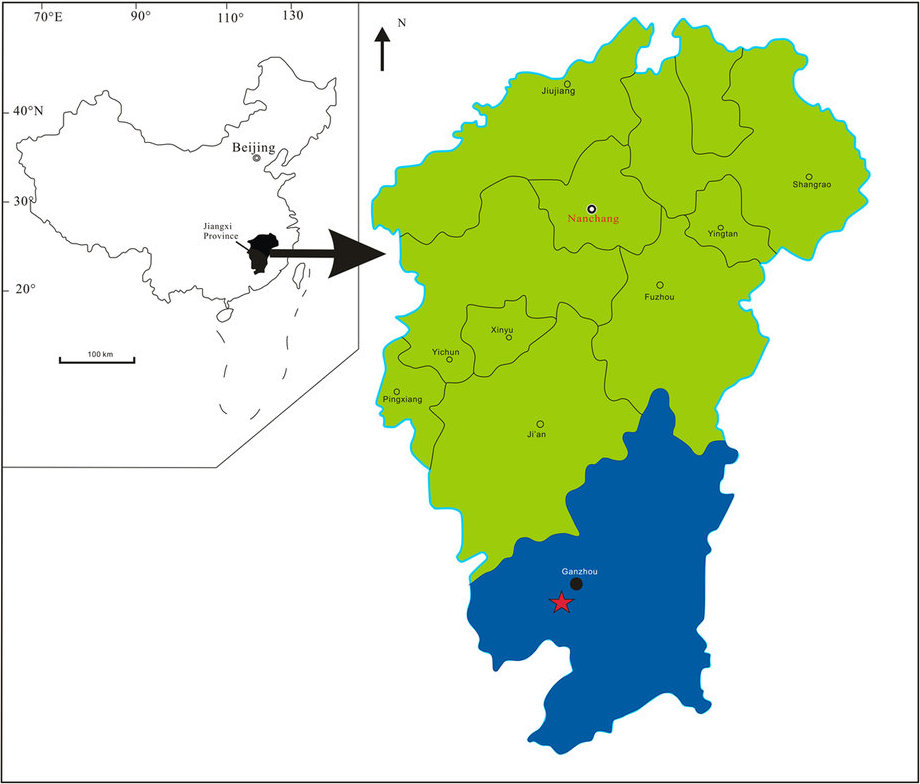|
Qianzhousaurus
''Qianzhousaurus'' (meaning "Qianzhou lizard") is a genus of tyrannosaurid dinosaurs that lived in Asia during the Late Cretaceous period. There is currently only one species named, the type species ''Qianzhousaurus sinensis'' which is a member of the tribe Alioramini within the group, and most closely related to ''Alioramus'', another alioramin. History of discovery The holotype specimen, GM F10004, was unearthed in southern China, Ganzhou, at the Nanxiong Formation in the summer of 2010 during the construction of an industrial park and it was first described by paleontologists Junchang Lü, Laiping Yi, Stephen L. Brusatte, Ling Yang, Hua Li and Liu Chen in the journal ''Nature Communications'' in 2014. The genus is known from a partial sub-adult individual consisting of a nearly complete skull with the lower jaws missing all teeth (lost during fossilization), 9 cervical vertebrae, 3 dorsal vertebrae, 18 caudal vertebrae, both scapulocoracoids, partial ilia, and the left ... [...More Info...] [...Related Items...] OR: [Wikipedia] [Google] [Baidu] |
Alioramus
''Alioramus'' (; meaning 'different branch') is a genus of tyrannosaurid theropod dinosaurs from the Late Cretaceous period of Asia. It currently contains two species. The type species, ''A. remotus'' is known from a partial skull and three foot bones recovered from the Mongolian Nemegt Formation, which was deposited in a humid floodplain about 70 million years ago. These remains were named and described by Soviet paleontologist Sergei Kurzanov in 1976. A second species, ''A. altai'', known from a much more complete skeleton also from the Nemegt Formation, was named and described by Stephen L. Brusatte and colleagues in 2009. Its relationships to other tyrannosaurid genera were at first unclear, with some evidence supporting a hypothesis that ''Alioramus'' was closely related to the contemporary species ''Tarbosaurus bataar''. However, the discovery of ''Qianzhousaurus'' indicates that it belongs to a distinct branch of tyrannosaurs, namely the tribe Alioramini. ''Alioramu ... [...More Info...] [...Related Items...] OR: [Wikipedia] [Google] [Baidu] |
Tyrannosaurid
Tyrannosauridae (or tyrannosaurids, meaning "tyrant lizards") is a family of coelurosaurian theropod dinosaurs that comprises two subfamilies containing up to thirteen genera, including the eponymous ''Tyrannosaurus''. The exact number of genera is controversial, with some experts recognizing as few as three. All of these animals lived near the end of the Cretaceous Period and their fossils have been found only in North America and Asia. Although descended from smaller ancestors, tyrannosaurids were almost always the largest predators in their respective ecosystems, putting them at the apex of the food chain. The largest species was ''Tyrannosaurus rex'', one of the largest and most massive known land predators, which measured over in length and according to most modern estimates to in weight. Tyrannosaurids were bipedal carnivores with massive skulls filled with large teeth. Despite their large size, their legs were long and proportioned for fast movement. In contrast, their ... [...More Info...] [...Related Items...] OR: [Wikipedia] [Google] [Baidu] |
Alioramini
Alioramini is a tribe of long-snouted tyrannosaurine tyrannosaurids from the Late Cretaceous epoch. It includes the tyrannosaurid genera ''Alioramus'' and '' Qianzhousaurus''. Although tyrannosaurids are known from a variety of places around the globe, alioramins are currently restricted to Asia in mostly Maastrichtian strata. Alioramins were medium-sized tyrannosaurids, reaching around in length. Their snouts were much shallower and gracile than other tyrannosaurids, such as the massive ''Tarbosaurus'' or ''Tyrannosaurus''. Most notably, their nasal bones were ornamented with a series of rugose, pointy bumps on its top surface. The tribe Alioramini was first coined in 1995 by George Olshevsky only to contain the at-the-time uncertain ''Alioramus''. In 2014 the tribe was formally defined as a clade-based branch containing all tyrannosaurids more related to ''Alioramus'' than to ''Albertosaurus'', ''Proceratosaurus'', and ''Tyrannosaurus''. Hence, the tribe Alioramini consists of ... [...More Info...] [...Related Items...] OR: [Wikipedia] [Google] [Baidu] |
Nanxiong Formation
The Nanxiong Formation (also known as Yuanpu Formation) is a Late Cretaceous geologic formation in Guangdong Province. Dinosaur remains are among the fossils that have been recovered from the formation. Description It consists of continental siliciclastic red beds Red beds (or redbeds) are sedimentary rocks, typically consisting of sandstone, siltstone, and shale, that are predominantly red in color due to the presence of ferric oxides. Frequently, these red-colored sedimentary strata locally contain ..., with fauna which similar to that of the Nemegt Formation. It has been dated about 66.7 ± 0.3 million years ago. It is the lowest unit of the Nanxiong Basin, a small graben created during Mesozoic rifting. Buck et al. state that it overlies Jurassic granite basement, and is conformably overlain by the Shanghu Formation. Alternative stratigraphic schemes for the Nanxiong basin have been proposed, one of which refers to the Nanxiong succession as the Nanxiong Group, and d ... [...More Info...] [...Related Items...] OR: [Wikipedia] [Google] [Baidu] |


